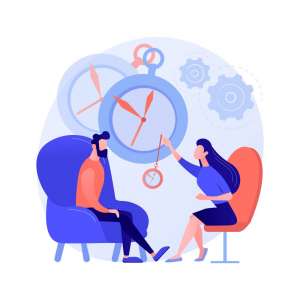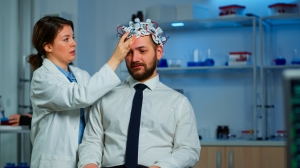-
- Alternative therapies are growing in popularity as people seek more holistic and personalized approaches to healthcare.
- Osteopathy and similar practices focus on whole-body healing, often complementing traditional medical treatments.
- Small communities increasingly offer access to these therapies, making them more accessible outside urban areas.
- First-time visits often involve in-depth conversations about lifestyle and wellbeing, emphasising long-term healing.
When it comes to looking after your health these days, there’s a noticeable shift happening. More people are questioning the one-size-fits-all approach of conventional medicine and turning toward alternatives that consider the whole person, not just the symptoms. Maybe you’ve felt this: that nagging sense that a quick prescription doesn’t get to the issue's root. Or perhaps you’ve heard from a friend who swears by acupuncture, reiki, or something you can’t pronounce.
Alternative therapies aren’t exactly new—they’ve been around for centuries—but how people embrace them now is different. It’s no longer just the "natural" crowd exploring other options; it’s everyday folks who are curious about healing that feel more connected and personal. So what’s drawing people in? Let’s unpack it.
Why People Are Seeking Alternatives to Conventional Medicine
Modern medicine has achieved some incredible things—no doubt about it. But it also has its blind spots. Many people find themselves bouncing between specialists, prescribed medication after medication, and still don’t feel any better. It can start to feel like your care is more about managing symptoms than understanding what’s happening.
That’s where alternative therapies start to catch people’s attention. They often take a more holistic view, considering your body, mind, and even your lifestyle in the process of healing. Instead of just asking, “What hurts?” practitioners might also ask, “What’s going on in your life?” or “How are you sleeping?” These minor differences can feel surprisingly refreshing.
And then there’s the time factor. Appointments in the conventional world are often short and rushed. Many alternative therapists spend more time getting to know you and your history, which can make a huge difference in how supported you feel. It’s not just about the treatment—it’s about being heard.
That doesn’t mean you have to pick one side or the other. For many people, the sweet spot is somewhere in between. They might still see their GP, but also book a massage or herbal consult when they need different support. It’s not either-or—it’s both-and.
The Rise of Osteopathy and Local Access to Care
Among the many alternative therapies gaining momentum, osteopathy stands out for its hands-on, whole-body approach. It blends traditional medical knowledge with a deep focus on how the body’s systems are interconnected. Osteopaths look beyond the obvious—like a sore back or stiff neck—and try to understand the root cause, which could be anything from poor posture to stress or even digestive issues.
One of the things that makes osteopathy so appealing is its gentle, noninvasive nature. Rather than relying on medication or surgery, osteopaths use manual techniques—stretching, massaging, and moving joints—to help improve mobility, blood flow, and overall function. Osteopathy is about encouraging the body’s natural ability to heal itself, not overriding it.
This kind of care is becoming easier, even in smaller communities. If you live outside a big city, it used to be tough to find someone offering holistic services nearby. But that’s changing. For instance, scheduling osteopath consultations in Bunyip can offer a more tailored experience, especially for those looking for more personal and community-based healthcare.
Local practitioners often build strong relationships with their clients, which adds a layer of trust that’s sometimes missing in fast-paced medical environments. The whole dynamic shifts when you’re not just a number in a waiting room. And in a place like Bunyip, where word-of-mouth still means something, finding the right fit can be much more approachable than expected.
Comparing Popular Alternative Therapies
As you explore the world of alternative healing, you’ll quickly notice no shortage of options. It’s not just about choosing between Western and Eastern medicine anymore—it’s about finding the right approach for your body and your life.
Osteopathy is just one path. Naturopathy, which relies heavily on natural remedies, nutrition, and lifestyle adjustments, can also be helpful for chronic issues like fatigue or digestive trouble. Acupuncture, a practice rooted in Traditional Chinese Medicine, uses tiny needles to stimulate energy flow through the body. While it might sound intimidating, many people swear by it for managing pain, stress, or sleep issues.
You’ve probably also heard of reiki, a form of energy healing that restores balance through gentle, hands-on guidance. It might sound a little “out there,” but for some people, the calming experience and emotional support make a significant impact, especially when dealing with burnout or anxiety.
Each of these therapies has its philosophy, strengths, and, just as importantly, its feel. What works wonders for your best friend might not click with you, and that’s okay. What’s becoming more common—and more accepted—is mixing and matching. Someone might see an osteopath for back pain, a naturopath for immune support, and a massage therapist to unwind. It’s less about pledging allegiance to one modality and more about building a personal toolkit for well-being.
The real beauty of this variety is that it puts you in the driver’s seat. You’re not just following doctor’s orders—you’re actively choosing how you want to feel and what kind of care feels right.
What to Expect from Your First Alternative Therapy Visit
Trying something new—especially regarding your health—can be nerve-wracking. But one of the biggest surprises people report after their first alternative therapy appointment is how…human it feels. There’s often a real sense of being seen and understood, not just poked and prodded.
Whether you’re seeing an osteopath, a naturopath, or an acupuncturist, you can expect your first session to start with a deep dive into your health history. But instead of just focusing on one issue, you’ll probably be asked about your sleep, stress levels, diet, and even emotional well-being. This is part of the holistic approach—looking at the whole picture.
The therapy itself will vary depending on the modality. If it’s osteopathy, you might experience gentle stretching and hands-on techniques to realign your body. If it’s acupuncture, you’ll lie still while fine needles are placed in specific points to encourage balance. If it’s Reiki or massage, the focus might be on calming the nervous system and promoting deep relaxation.
The main takeaway? It’s not about instant fixes. Alternative therapies often work best over time, through consistent sessions and a commitment to overall health changes. While they may not replace every element of conventional medicine, they can powerfully complement it.
You’ll likely leave your first session feeling more informed, hopeful, and maybe even a little lighter. You'll feel like you’ve finally found someone who listens and wants to help you heal, not just “fix” you.
Conclusion: Embracing a New Wellness Philosophy
The world of alternative therapies invites you to think differently about health, not as a series of isolated problems to fix, but as a dynamic, interconnected system that deserves time, attention, and care. It’s not about turning your back on conventional medicine; it’s about expanding your options and finding a path that feels more aligned with your needs.
Whether you’re drawn to osteopathy, acupuncture, naturopathy, or something else entirely, the most important step is starting the journey with an open mind. There’s no universal formula for wellness, and that’s the beauty of it—you get to explore, learn, and tune into what works best for your unique body and life.
In a world that often moves fast and treats health like a checklist, alternative therapies offer a refreshing reminder: healing is personal, and sometimes, the most powerful results come from approaches that treat you as a whole person, not just a set of symptoms.






